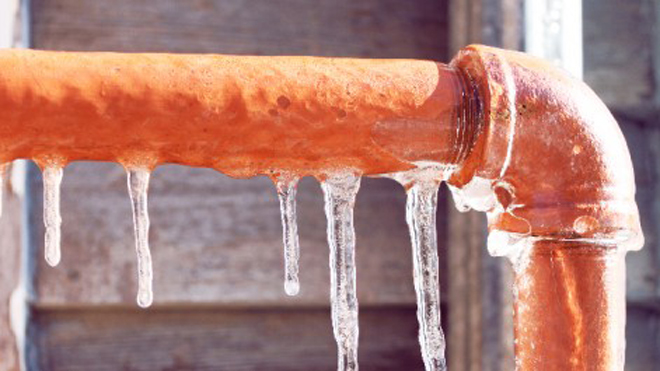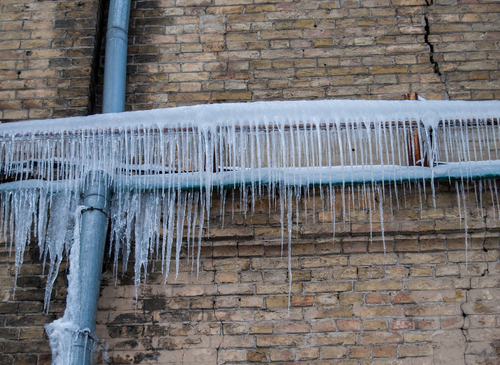Essential Advice to Avoid Frozen Pipes in Cold Weather
Essential Advice to Avoid Frozen Pipes in Cold Weather
Blog Article
Everyone is bound to have his or her own rationale about How to Prevent Your Pipes From Freezing.

Cold weather can wreak havoc on your plumbing, especially by freezing pipes. Right here's just how to stop it from occurring and what to do if it does.
Intro
As temperatures decline, the risk of icy pipelines rises, possibly leading to pricey repair work and water damage. Recognizing just how to stop icy pipelines is crucial for homeowners in cool climates.
Prevention Tips
Shielding prone pipes
Cover pipelines in insulation sleeves or make use of warm tape to protect them from freezing temperature levels. Focus on pipelines in unheated or exterior locations of the home.
Heating methods
Keep interior rooms adequately heated up, especially locations with pipes. Open cupboard doors to enable cozy air to flow around pipes under sinks.
How to determine frozen pipes
Search for reduced water circulation from taps, uncommon smells or sounds from pipelines, and noticeable frost on subjected pipelines.
Long-Term Solutions
Architectural adjustments
Consider rerouting pipelines far from outside wall surfaces or unheated locations. Add added insulation to attic rooms, basements, and crawl spaces.
Updating insulation
Invest in top quality insulation for pipelines, attics, and walls. Correct insulation helps keep constant temperatures and decreases the threat of icy pipelines.
Protecting Outside Pipes
Yard pipes and exterior taps
Disconnect and drain yard hoses prior to wintertime. Install frost-proof faucets or cover outdoor faucets with shielded caps.
Comprehending Icy Pipes
What causes pipelines to freeze?
Pipes ice up when revealed to temperatures listed below 32 ° F (0 ° C) for expanded periods. As water inside the pipes freezes, it broadens, putting pressure on the pipe wall surfaces and possibly creating them to burst.
Dangers and problems
Icy pipelines can bring about supply of water interruptions, residential property damages, and costly repair services. Ruptured pipelines can flood homes and create extensive architectural damages.
Indications of Frozen Pipeline
Determining frozen pipelines early can avoid them from rupturing.
What to Do If Your Pipes Freeze
Immediate activities to take
If you presume frozen pipelines, keep taps available to alleviate stress as the ice thaws. Make use of a hairdryer or towels soaked in hot water to thaw pipelines slowly.
Final thought
Avoiding frozen pipelines requires aggressive measures and fast responses. By comprehending the causes, indicators, and safety nets, homeowners can safeguard their plumbing throughout cold weather.
5 Ways to Prevent Frozen Pipes
Drain Outdoor Faucets and Disconnect Hoses
First, close the shut-off valve that controls the flow of water in the pipe to your outdoor faucet. Then, head outside to disconnect and drain your hose and open the outdoor faucet to allow the water to completely drain out of the line. Turn off the faucet when done. Finally, head back to the shut-off valve and drain the remaining water inside the pipe into a bucket or container. Additionally, if you have a home irrigation system, you should consider hiring an expert to clear the system of water each year.
Insulate Pipes
One of the best and most cost-effective methods for preventing frozen water pipes is to wrap your pipes with insulation. This is especially important for areas in your home that aren’t exposed to heat, such as an attic. We suggest using foam sleeves, which can typically be found at your local hardware store.
Keep Heat Running at 65
Your pipes are located inside your walls, and the temperature there is much colder than the rest of the house. To prevent your pipes from freezing, The Insurance Information Institute suggests that you keep your home heated to at least 65 degrees, even when traveling. You may want to invest in smart devices that can keep an eye on the temperature in your home while you’re away.
Leave Water Dripping
Moving water — even a small trickle — can prevent ice from forming inside your pipes. When freezing temps are imminent, start a drip of water from all faucets that serve exposed pipes. Leaving a few faucets running will also help relieve pressure inside the pipes and help prevent a rupture if the water inside freezes.
Open Cupboard Doors
Warm your kitchen and bathroom pipes by opening cupboards and vanities. You should also leave your interior doors ajar to help warm air circulate evenly throughout your home.

As a passionate reader on Winter Plumbing Precautions: Preventing Frozen Pipes, I think sharing that excerpt was sensible. Feel free to set aside a second to share this blog posting if you enjoyed it. I take joy in your readership.
Call Today Report this page